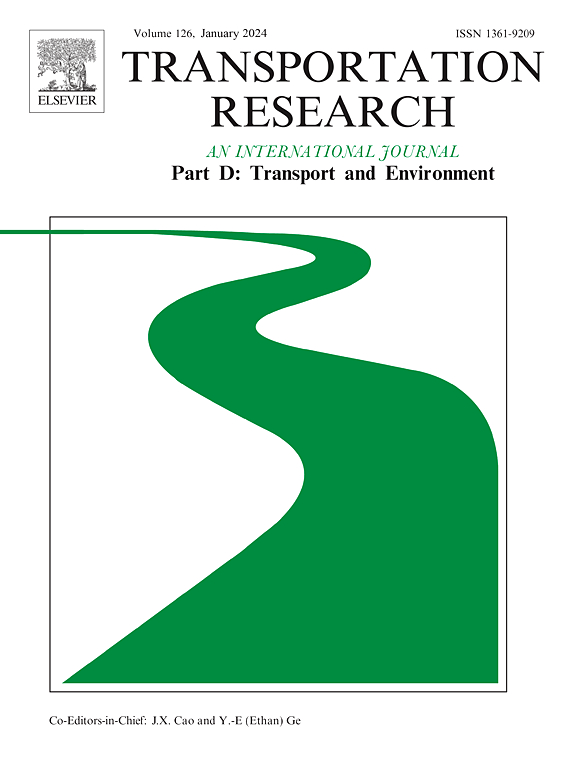Counterproductive development: New towns may produce and attract more long-distance commuting
IF 7.7
1区 工程技术
Q1 ENVIRONMENTAL STUDIES
Transportation Research Part D-transport and Environment
Pub Date : 2025-08-19
DOI:10.1016/j.trd.2025.104958
引用次数: 0
Abstract
Aggregate studies on commuting behavior have primarily focused on trips produced from an area while overlooking those attracted to the area, leading to a partial understanding of commuting patterns. Using mobile phone signaling data from Dalian and Shenyang, China, this study illustrates the spatial distributions of produced and attracted commuting distances and examines their nonlinear associations with built environment characteristics, using an XGBoost model. Results show strong positive correlations between produced and attracted commuting. Distance to business center is the most important predictor. As this distance grows, both produced and attracted commuting distances increase. Its association with attracted commuting distance differs from that in developed countries. Notably, some suburban new towns—intended to reduce commuting through simultaneous population and employment decentralization—have evolved into sparsely populated “job islands,” intensifying long-distance commuting instead. Therefore, phased development and more integrated residential and employment decentralization are conducive to mitigating long-distance commutes.
适得其反的发展:新城镇可能产生并吸引更多的长途通勤
关于通勤行为的综合研究主要集中在一个地区产生的旅行,而忽略了被该地区吸引的旅行,导致对通勤模式的部分理解。本研究利用中国大连和沈阳的手机信号数据,利用XGBoost模型说明了产生和吸引通勤距离的空间分布,并检验了它们与建筑环境特征的非线性关联。结果表明,产生通勤和吸引通勤之间存在很强的正相关关系。到商务中心的距离是最重要的预测因素。随着这个距离的增加,产生和吸引的通勤距离都增加了。其与吸引通勤距离的关系与发达国家有所不同。值得注意的是,一些郊区新城——旨在通过人口和就业的同时分散来减少通勤——已经演变成人口稀少的“工作岛”,反而加剧了长途通勤。因此,分阶段发展和更加一体化的居住和就业分散有利于缓解长途通勤。
本文章由计算机程序翻译,如有差异,请以英文原文为准。
求助全文
约1分钟内获得全文
求助全文
来源期刊
CiteScore
14.40
自引率
9.20%
发文量
314
审稿时长
39 days
期刊介绍:
Transportation Research Part D: Transport and Environment focuses on original research exploring the environmental impacts of transportation, policy responses to these impacts, and their implications for transportation system design, planning, and management. The journal comprehensively covers the interaction between transportation and the environment, ranging from local effects on specific geographical areas to global implications such as natural resource depletion and atmospheric pollution.
We welcome research papers across all transportation modes, including maritime, air, and land transportation, assessing their environmental impacts broadly. Papers addressing both mobile aspects and transportation infrastructure are considered. The journal prioritizes empirical findings and policy responses of regulatory, planning, technical, or fiscal nature. Articles are policy-driven, accessible, and applicable to readers from diverse disciplines, emphasizing relevance and practicality. We encourage interdisciplinary submissions and welcome contributions from economically developing and advanced countries alike, reflecting our international orientation.

 求助内容:
求助内容: 应助结果提醒方式:
应助结果提醒方式:


